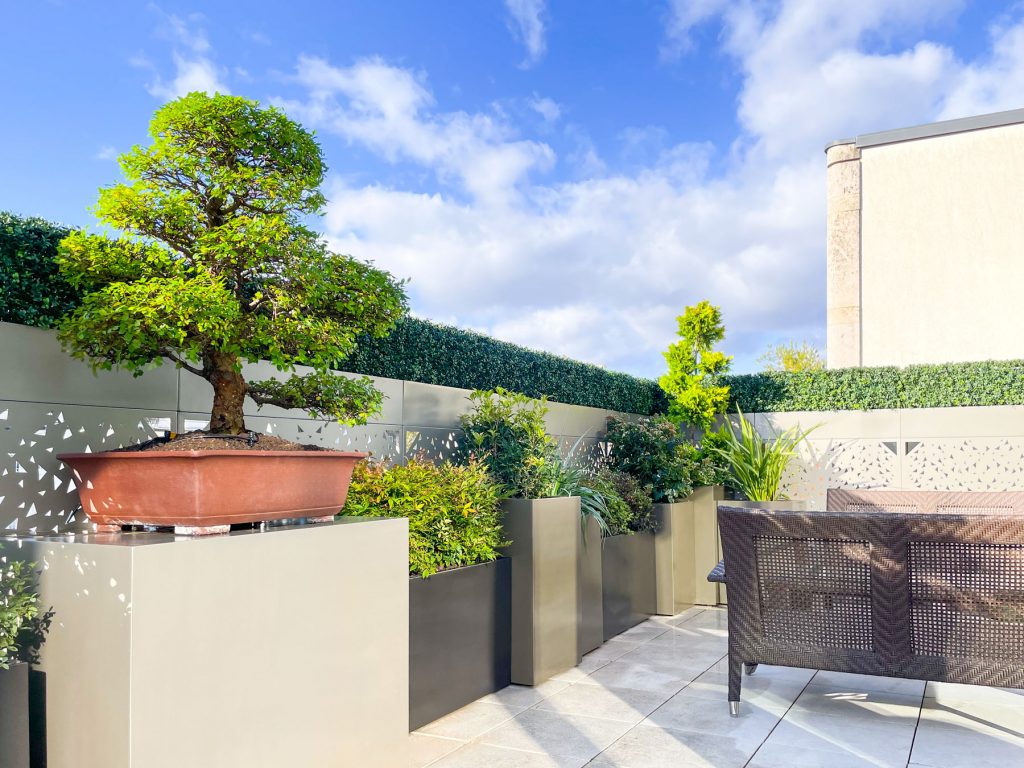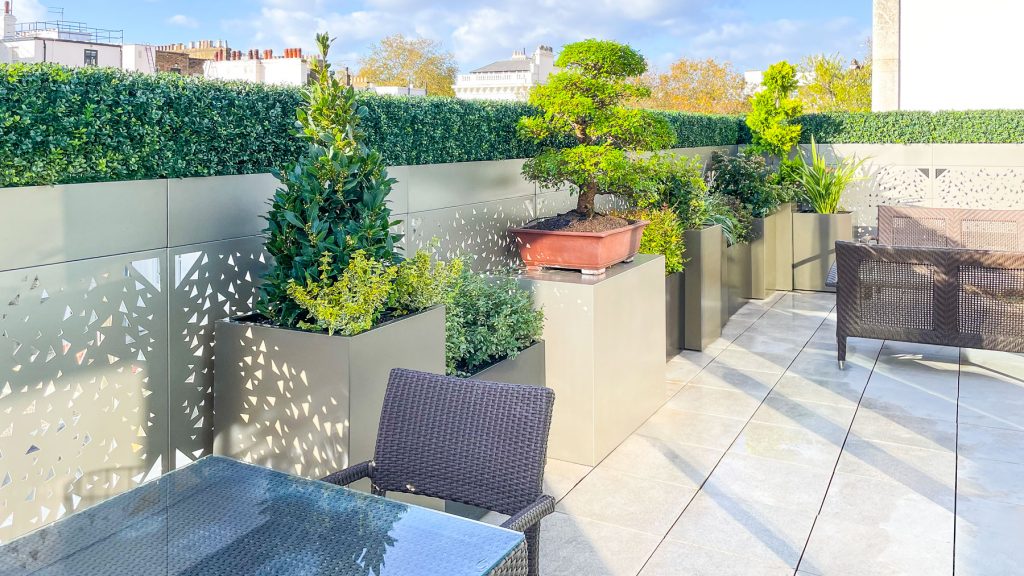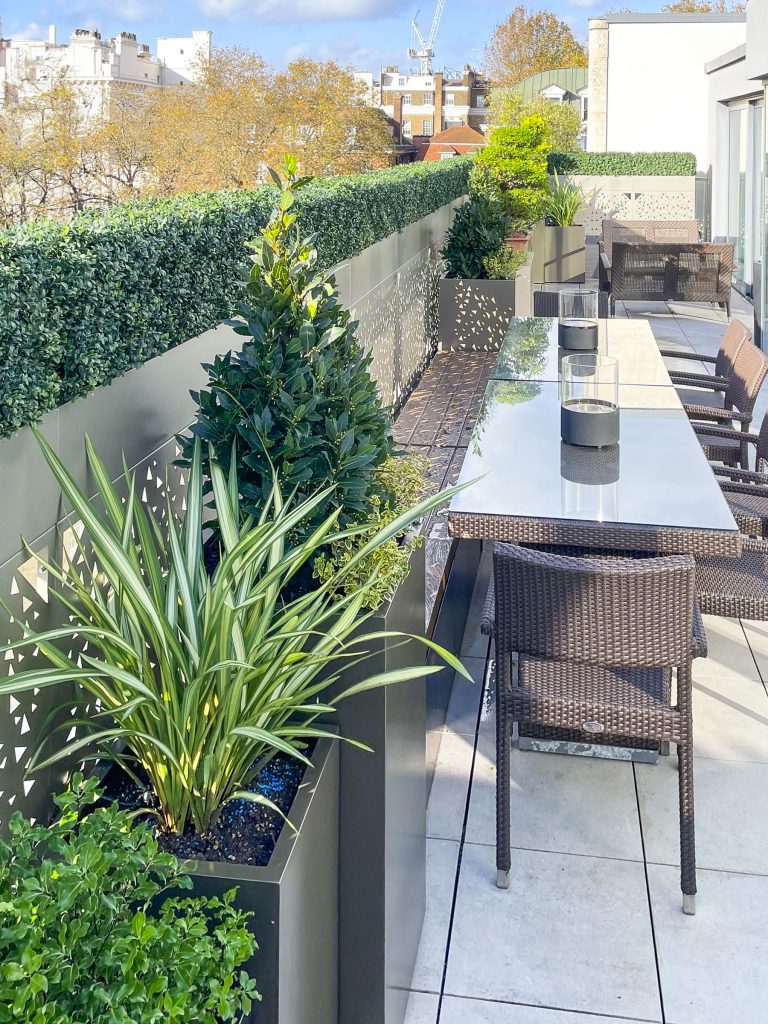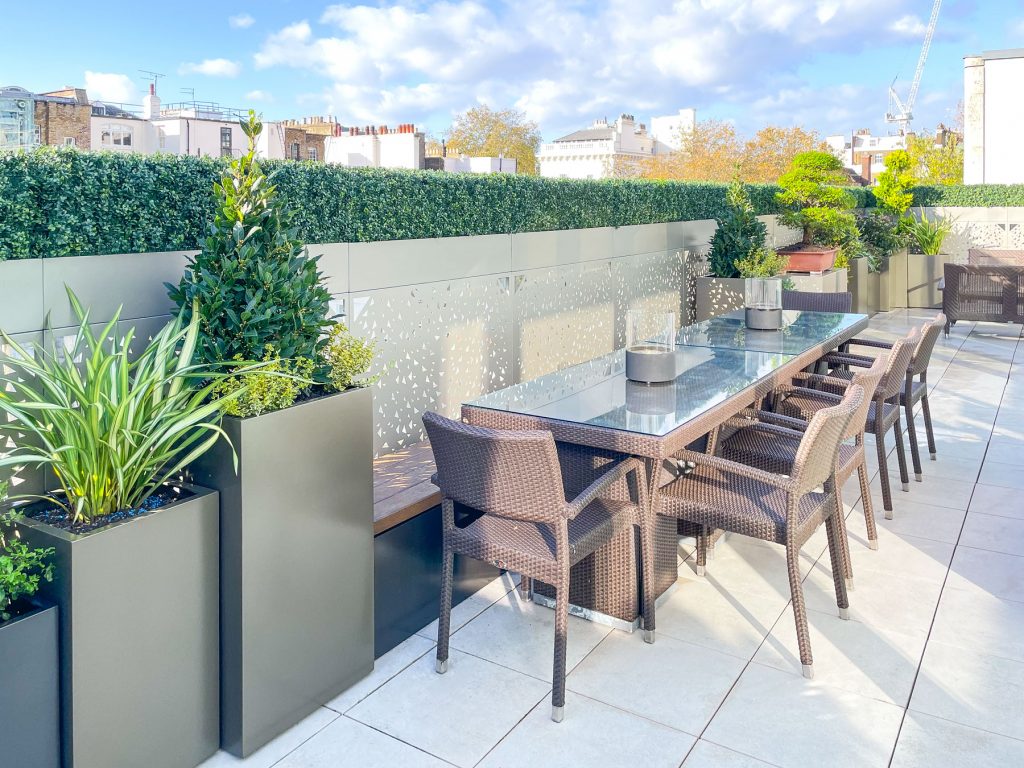Planning a roof terrace compliant with fire safety regulations




How to make rooftop gardens compliant with fire safety regulations, especially in accordance with the UK Building Regulations and European Standard BS EN 13501-5, follow these guidelines:
Materials Selection:
Use non-combustible materials for major structural elements like planters, seating, walkways, and decking. For planters materials like Glass Reinforced Plastic (GRP) Using Class II resin, stone, concrete, or steel are suitable for ensuring compliance with fire safety regulations. These materials have a high level of fire resistance and are likely to meet the BROOF(t4) criteria.
Non-Combustible Material:
Nearly 40% of a GRP planter is glass which is a non-combustible material. Therefore, fire resistant (Class I and Class II) resins ensure GRP is a non-combustible material by nature. It does not catch fire, contribute to the spread of flames, and a Class I resin will not release harmful fumes when exposed to fire. Please note GRP fabricated in a general purpose resin, although will not self-ignite it is not classed as fire resistant. In contrast, metal planters, depending on their composition, can melt or deform when subjected to high temperatures, potentially exacerbating a fire hazard.
Non-Conductive Material:
GRP is a non-conductive material, meaning it does not conduct heat or electricity effectively. In contrast, metals, especially those with high thermal conductivity like aluminium and steel, can quickly heat up and conduct heat, potentially intensifying and contributing to the spread of a fire.
High Fire Resistance:
GRP planters can be manufactured using Class I and Class II fire-resistant resins and additives, this provides an additional layer of protection against fire incidents. These fire-resistant formulations can withstand high temperatures and resist combustion, reducing the risk of the planters contributing to a fire. Fire-resistant GRP planters are less likely to ignite or exacerbate the situation, reducing the overall fire risk in the area.
Please watch our video showing our fire resistant resin test.
Building regulations for rooftop gardens.
The amendments to UK Building Regulations in 2019, known as the ‘Fire Safety Approved Document B,’ introduced important regulations related to flat roof safety, including those applicable to rooftop gardens. These regulations are based on the European Standard BS EN 13501-5 for fire performance classification procedures for roofs and roof coverings. Here’s a breakdown of the key points:
Roof Fire Performance Ratings:
Fire Safety Ratings:
Roofs and roof coverings are assigned fire safety ratings under BS EN 13501-5. These ratings determine the minimum distance required between the rooftop and relevant boundaries for different building types and uses. The ratings include:
BROOF(t4): This is the highest possible European standard for roofs and roof coverings, and it indicates unrestricted use anywhere on the roof. Meeting this rating demonstrates maximum fire performance and safety.
CROOF(t4): Minimum distance from any point on relevant boundary (England) should be at least 6 meters. This rating may apply to certain building types and uses.
DROOF(t4): Minimum distance from any point on relevant boundary (England) should be at least 6, 12, or 20 meters, depending on the building type and use.
EROOF(t4): Similar to DROOF, it also depends on the building type and use, with minimum distances of at least 6, 12, or 20 meters from the boundary.
FROOF(t4): Minimum distance from any point on relevant boundary (England) should be at least 20 meters, and it depends on the building type and use.
BROOF(t4) for Maximum Fire Performance: To ensure maximum fire performance and safety in rooftop gardens, aim to meet the BROOF(t4) criteria. This rating allows unrestricted use of materials anywhere on the roof and represents the highest level of fire resistance.
No AROOF Rating: It’s important to note that there is no AROOF rating in the European standard, meaning that the highest attainable rating is BROOF(t4).
Compliance with Regulations:
Familiarize yourself with the specific fire safety regulations applicable to rooftop gardens in your region, including any amendments or updates. To comply with UK Building Regulations and ensure rooftop gardens meet the required fire safety standards, architects and designers should aim for the highest fire performance rating, which is BROOF(t4). This rating allows for unrestricted use of materials on the rooftop. To comply with BS EN 13501-5 work with non-combustible materials like Class I or Class II fire resistant resin Glass Reinforced Plastic (GRP), stone, concrete or steel. These materials have a high level of fire resistance and are likely to meet the BROOF(t4) criteria. Consult with fire safety experts if necessary to ensure compliance.
Design Considerations:
Ensure that the rooftop garden design features soil or soil-like material that is at least 30mm deep.
Use soil or soil-like material with less than 20% organic matter.
Include a 1m wide fire break at 40m intervals, typically made from gravel or paving slabs, to prevent the spread of fire.
Lay gravel or shingle strips around all penetrating structures on the rooftop.
Fire Breaks and Design Considerations:
Pay attention to design elements such as fire breaks, gravel or paving slabs, and gravel or shingle strips around penetrating structures as required by the regulations. These features help prevent the spread of fire.
Timber benches (if desired):
Timber benches can be used for practical or aesthetic purposes if your design calls for it, as long as it’s not considered a “specific attachment” as defined by your local regulations. Be aware that untreated timber may have lower fire resistance.
Fire-Resistant Treatments for Timber:
If you want to use timber and it’s allowed by regulations, consider applying fire-retardant treatments. These treatments can improve the fire resistance of timber elements.
Untreated timber is typically rated as “D” in fire performance, but with the right treatment, you can achieve higher ratings (C or B).
Regular Maintenance:
Implement a maintenance plan to ensure the ongoing compliance of the rooftop garden. Regularly inspect and maintain the garden to remove dry or dead vegetation and monitor the condition of materials used. Metal planters and timber may need to be re coated but GRP planters have very little maintenance and will just need to be wiped clean.
Emergency Access and Safety Measures:
Ensure that the rooftop garden design includes clear emergency access routes and safety measures for occupants. Educate users on responsible behaviour, including the prohibition of smoking or open flames.
Sustainable Design:
Consider sustainable practices, such as using FSC®-certified wood, to align with environmental goals while ensuring compliance with fire safety regulations.
By carefully considering these guidelines and working in compliance with local regulations and standards, you can create a rooftop garden that provides the desired benefits while prioritizing fire safety for building occupants and surrounding structures. Always ensure that your design and materials choices align with the specific regulations in your area and seek expert advice when needed.
Consult with Experts:
If you have any doubts or concerns about compliance with fire safety regulations, consult with local fire safety experts, authorities, or building inspectors to seek guidance and approval. Or read the regulations in full here ( https://www.gov.uk/government/publications/fire-safety-approved-document-b )
By adhering to these regulations and standards, you can create safe, stunning and compliant rooftop gardens that contribute positively to urban environments while minimizing fire risks.
share us on…
